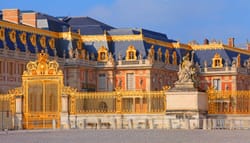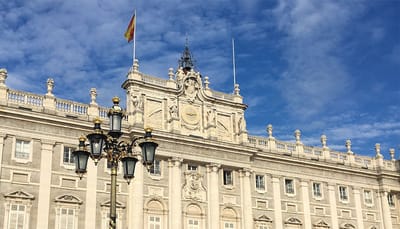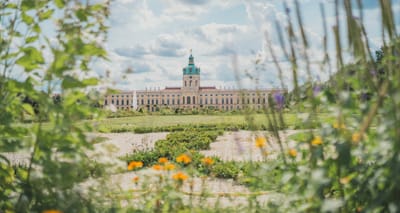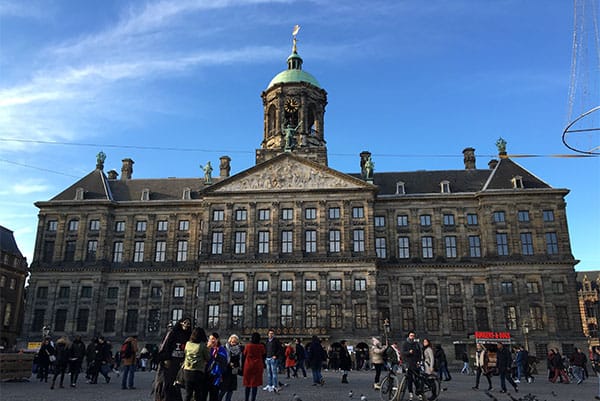
Built as the Town Hall of the City of Amsterdam in the 17th century, the Royal Palace of Amsterdam is one of three properties controlled by the Dutch monarch. The town hall became the residence of King Louis Napoleon after he ascended to the throne in 1806. After the King abdicated in favor of his son King Louis II, the palace (and the Netherlands) came to be controlled by the French in 1810.
The palace was returned to its former use as city hall, until King William I took the throne in 1813. Since that time, it has remained a palace controlled by the reigning monarch of the Netherlands.
The Royal Palace of Amsterdam is located at the head of Dam Square, just a short walk from the city’s central train station. It is open to the public for tours, except when in use by the royal family or reserved for a private event. I recently had the opportunity to tour the palace in my wheelchair, and will share that experience with you in this blog post.
General Information
The palace is open to the public from 10 a.m. to 5 p.m. 7 days a week. Closures for events and royal functions are listed on this calendar. Admission is available to adults for € 10,00. While a disability discount is not listed on the website, I received free admission. You may also be able to receive complimentary admission with a disability, but I cannot refer to a policy that guarantees it.
Wheelchair access to the ticket desk and to the start of the tour is available via a ramp at the center-right of the building’s front. An image of that ramp appears below:
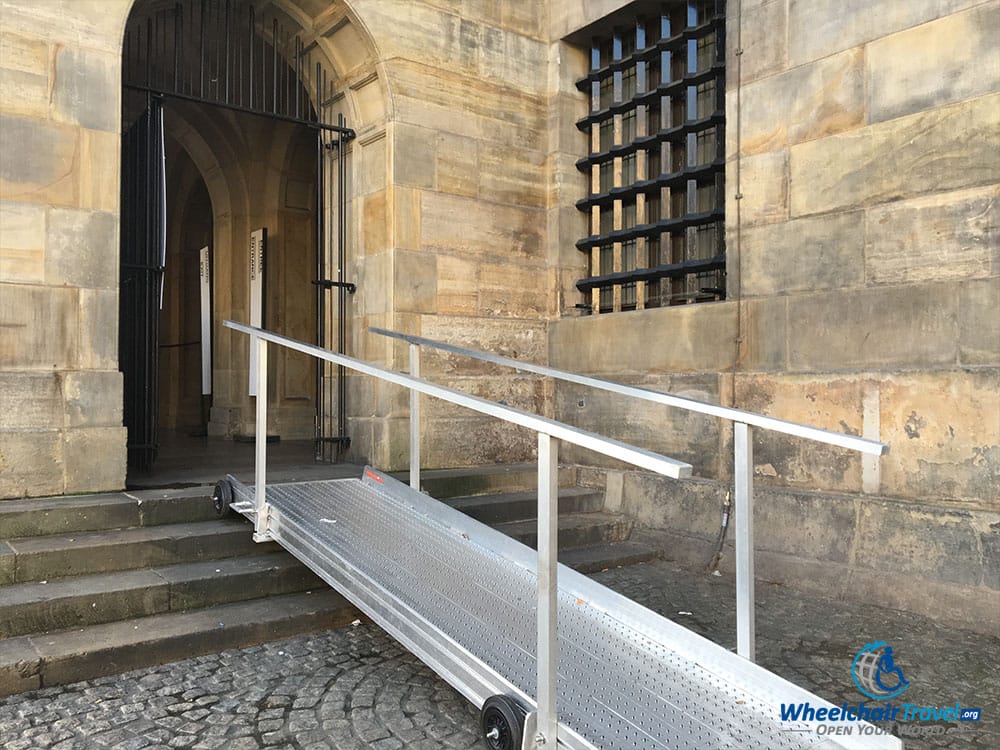
The two floors of the palace which are accessible to the public are also accessible to wheelchairs, with an elevator lift located inside the building.
All visitors are provided an audio guide with their admission, which allows for a very enjoyable self-guided tour. The audio guides are available in Dutch, English, German, French, Italian, Spanish, Russian and Chinese. Guided tours are available for an additional fee, but only to groups of 10-20 persons.
Inside the Palace
The palace has a lavish interior, but it is not over the top. I would best describe it as elegant. Allow me to share with you some of my favorite spaces:
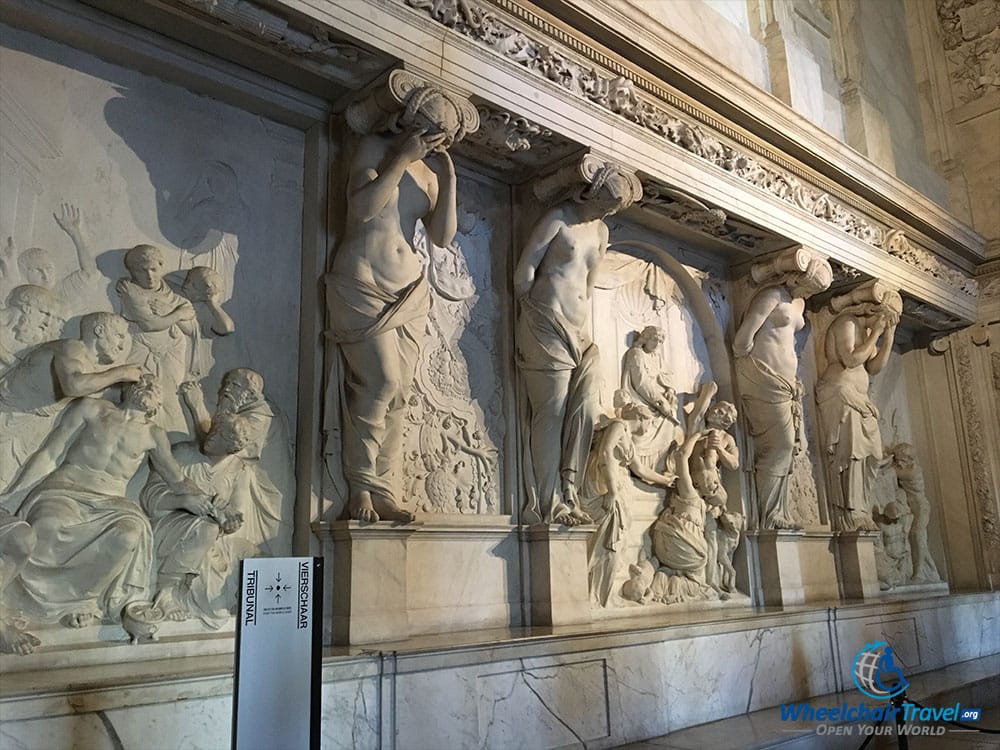
One of the first rooms you’ll see on the tour is the Tribunal, which later served as the king’s chapel. The tribunal was the place where criminals met their fate, with judgment and punishments handed down. When an offender was sentenced to death, he or she was hanged on the second floor.
In the photograph above, four sculptures of offenders waiting to be hanged line the walls, with marble reliefs set between each of them. The relief to the far right of the photo depicts a scene in which Roman consul Lucius Brutus gives the order to behead his sons, who were guilty of treason. From the palace website:
This scene is a symbol of righteousness, which the Amsterdam judges should possess. This means that if someone has done something illegal, his punishment should be given, even if the bailiff and aldermen know this person. The law of classical antiquity served as an inspiration for the bailiff and aldermen.
Each of the reliefs served a purpose, and offered a lesson in the way of justice to the Amsterdam officials charged with carrying it out.
When King Louis made the town hall into his palace, he converted the tribunal into a chapel where he could practice his Roman Catholic faith. The sculptures and reliefs which are on display today were covered with blue drapes. I am thankful that the king did not have these pieces of history removed from the palace.
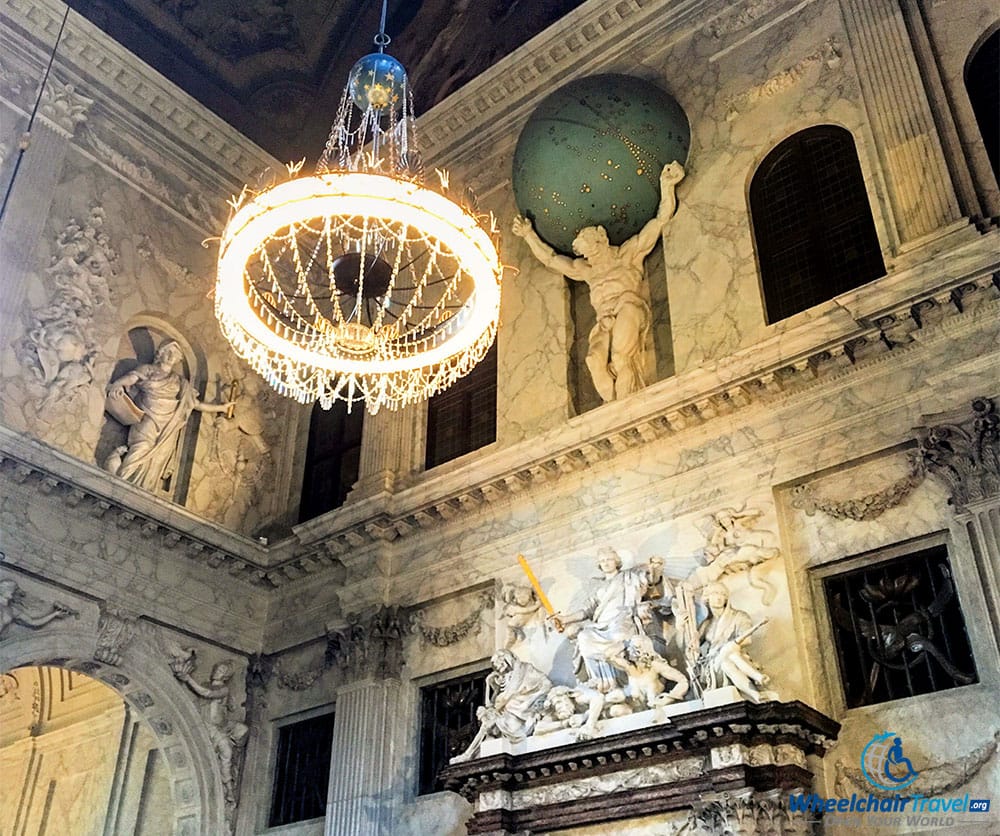
The most striking area within the palace interior is Citizens Hall. This massive hall takes up two floors and has a beautifully adorned and decorated arched ceiling. At the end of the hall and set high on the wall is a plaster statue of Atlas, bearing a celestial globe on his shoulders.
An equally enchanting chandelier hangs from the ceiling in front of Atlas – one of several which lines the hall.
Below the statue of Atlas and above the doorway to the Magistrates’ Chamber is a beautiful, if not dramatic scene depicting the nature of justice. The central figure, Justice, holds a sword in one hand and scales in the other. The palace website describes the purpose of this scene quite well:
This group represents the desire for a just Amsterdam, where avarice and envy – characteristics of thieves and murderers – are not tolerated. The skeleton with its hour glass symbolises Time and the revelation of Truth. In the end, Justice and Truth will always prevail.
Citizens Hall was the first venue in which proceedings of justice were held in early Amsterdam.
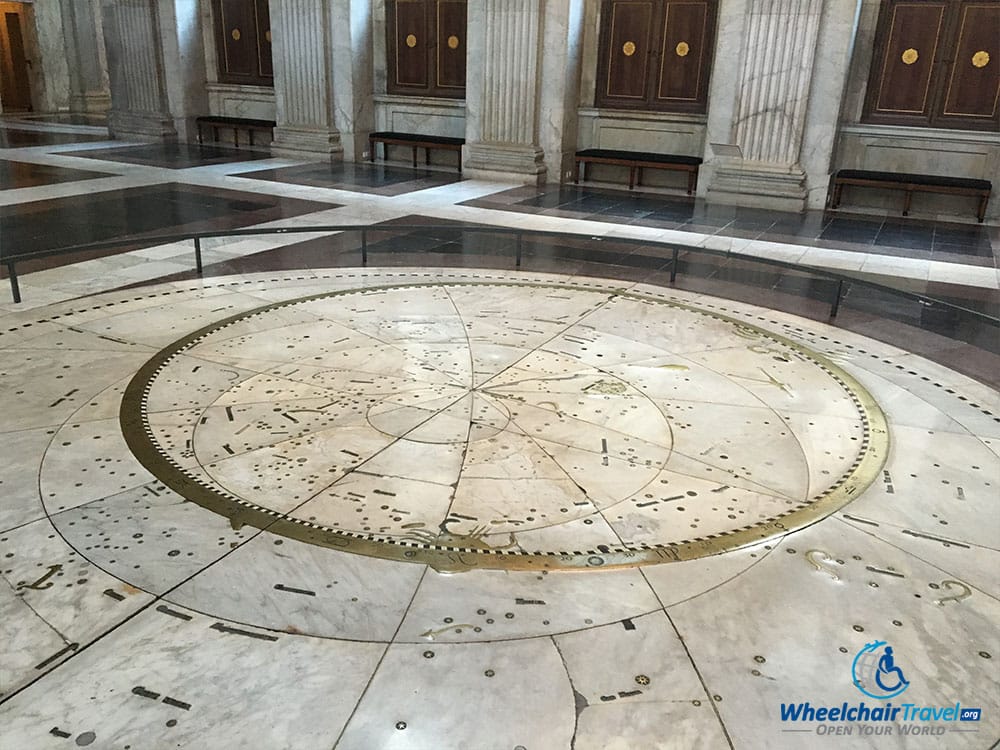
Laid into the floor of Citizens Hall are two maps: one of the Earth’s land masses, and a star chart (pictured above) of the Northern Hemisphere. This chart has remained in place since the hall was constructed in 1649 and is based on a map by Willem Jansz Blaeu. In the 17th century, Blaeu was the preeminent cartographer in the Netherlands. During his life, he served as the chief cartographer for the Dutch East India Company, a position later filled by his son Joan.
Although many of the copper inlays have been lost over time, much of the chart remains.
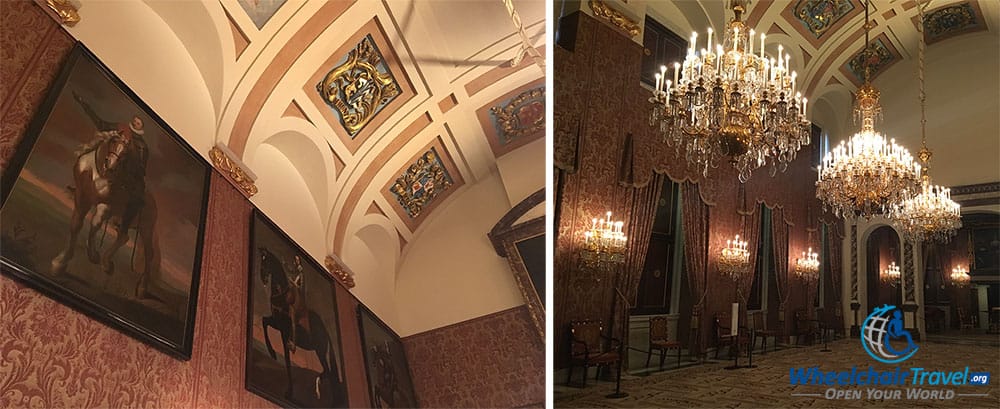
The Magistrates’ Chamber is a room I found to be exceptionally elegant. Beautiful curtains hang around the windows on one side of the chamber, while the other side is dominated by magnificent paintings (seen in the photo above). The magistrates practiced and oversaw the law in early Amsterdam, and were also charged with marrying couples who were not part of the Roman Catholic Church. Those marriages were often held in this very chamber.
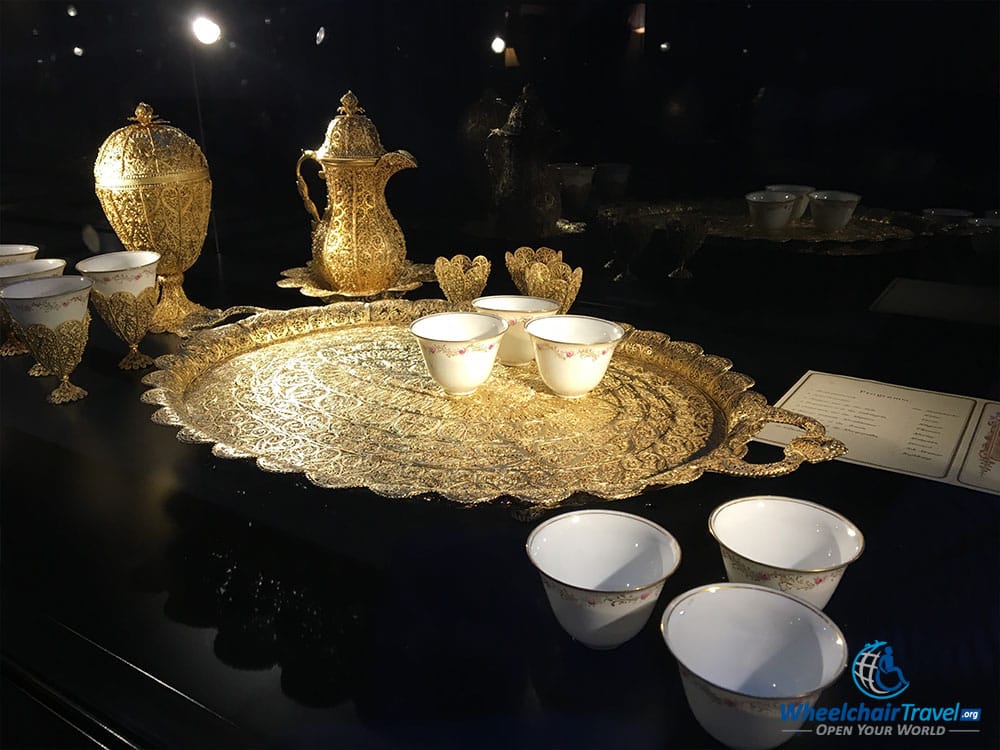
In a hall running parallel to the central Citizens Hall, displays showcased many items that were previously used or displayed in the palace. The photograph above is of a mocha service set, and included a total of 12 porcelain cups, 12 cup holders (zarfs), a mocha pot with saucer, a sugar bowl, and a gold presentation tray. From the exhibit description:
Following good etiquette, a cup of coffee is served at the end of a Royal dinner. A coffee or mocha service is a popular Royal gift. Many of these services are showpieces. They are primarily intended to be exhibited and have almost never been actually used.
The service in the photo above was given as a wedding gift to King Willem III and Queen Emma in 1879. They were decorated with crown and the initials W and E.
Location & Transportation
The Royal Palace of Amsterdam is located in a very exciting place for tourists, at the center of Dam Square. Many popular attractions, including the National Monument, Nieuwe Kerk, Madame Tussauds, Oude Kerk, the Church of St. Nicholas, and the city’s infamous Red Light District are all within 1 kilometer of the palace.
There are also plenty of wheelchair accessible restaurants – including fast food joints from the United States – scattered along the streets leading to the square.
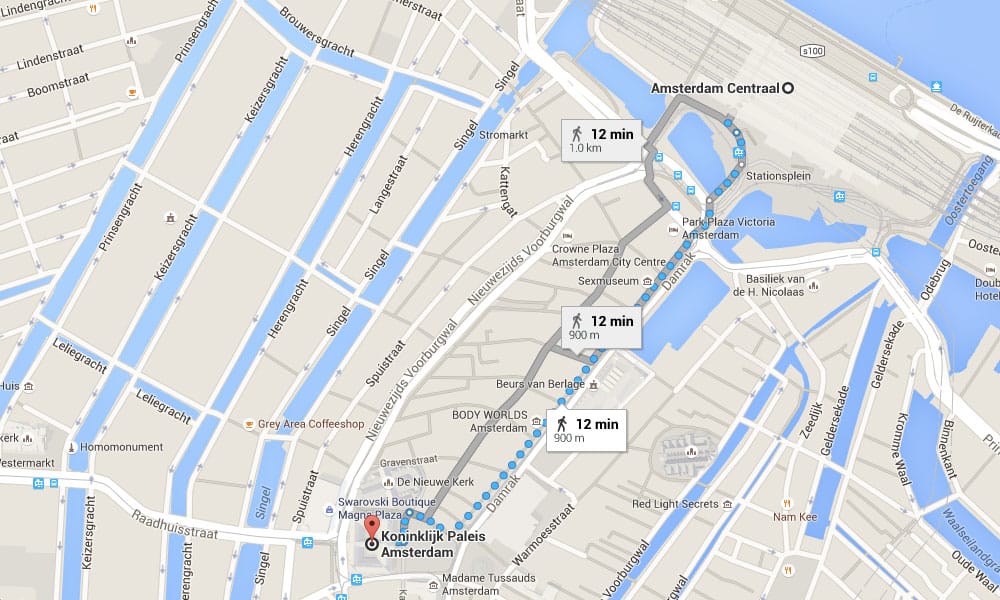
The map shown above highlights the walking route to Central Station, which is about 12 minutes and 1 kilometer away. International, regional and local train service is available from Central, as is accessible metro and bus service. More information on wheelchair accessible public transportation in Amsterdam can be found here.
Final Thoughts
I was able to complete my tour of the royal palace in less than two hours, and I am a read-everything type tourist. The audio guide was extremely helpful, and allowed me to understand the history and development of the building. It was a real treat to be granted access to a palace that is still used by the Dutch Royal Family. I recommend this tour to all visitors of Amsterdam – even if you aren’t given free entry, I’d say it would be 10 Euros well spent!
For more information, or to plan your visit, visit the palace’s official website at www.paleisamsterdam.nl.











